Fascinating flora and fauna findings in Singapore that were revealed in 2023
Sign up now: Get ST's newsletters delivered to your inbox
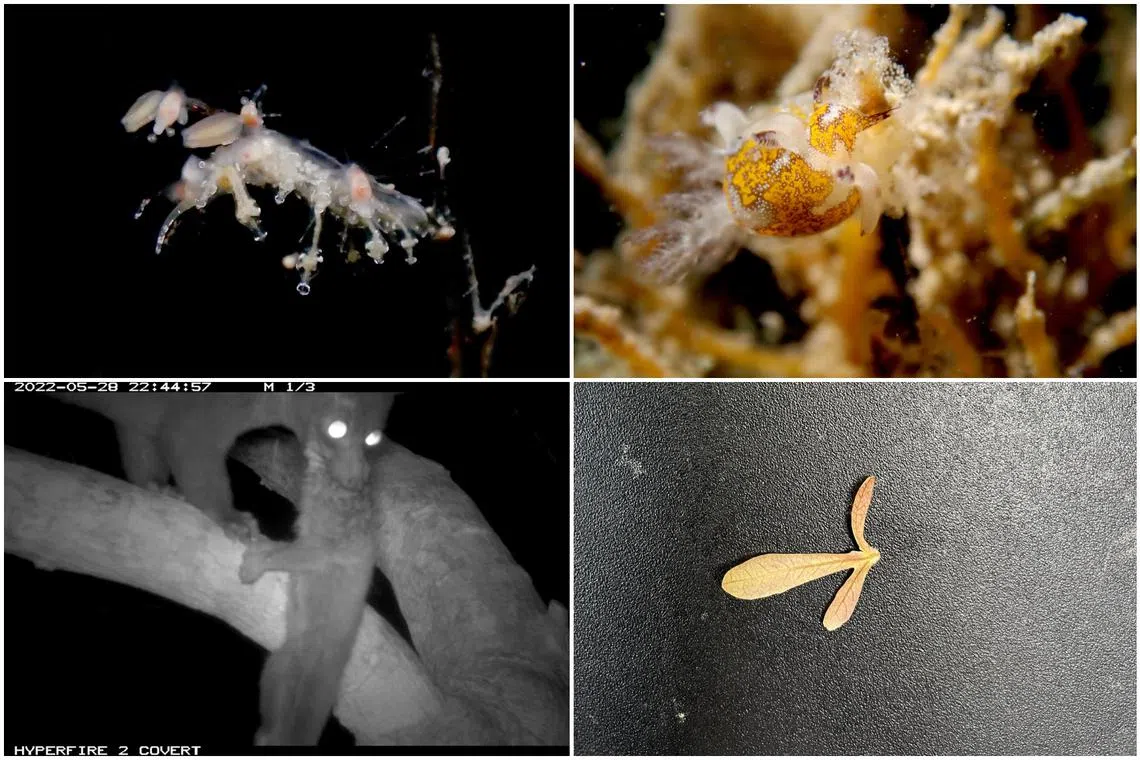
(Clockwise from top left) Two species of sea slug spotted in waters off Pulau Hantu, a fruit from Singapore's only native walnut tree, and a palm civet eating a slow loris.
PHOTOS: TOH CHAY HOON, WONG MINN XUAN, ALI IBRAHIM, ANDIE ANG
Follow topic:
SINGAPORE – From a mysterious sea lettuce patch to the rediscovery of a lost walnut tree, The Straits Times looks at some unusual findings made on and off Singapore’s shores, which were published in 2023.
These records in the island’s natural history were made public in the Lee Kong Chian Natural History Museum’s journal Nature In Singapore, which chronicles articles on the flora and fauna here.
Mysterious algal bloom
When parts of a beach on Lazarus Island turned fluorescent green in June 2022, scientists in Singapore were astonished.
The change was because of swathes of blooming sea lettuce, a type of algae, but this had never been formally observed on Singapore’s southern coast.
Worryingly, the mats of edible algae of the Ulva genus smothered a seagrass meadow, depriving it of light and oxygen.
Seagrass plays a vital role in combating climate change and the growth of the lettuce patch put this “prized ecosystem at risk”, researchers Pavarne Shantti, Adrian Dwiputra and Tasya Vadya Sarira wrote in a record published in January 2023.
Globally, seagrass meadows suck up planet-warming carbon up to 35 times faster than tropical rainforests.
These meadows, which remain unprotected in Singapore, also provide shelter and food for a diverse community of creatures ranging from sea cucumbers to dugongs.
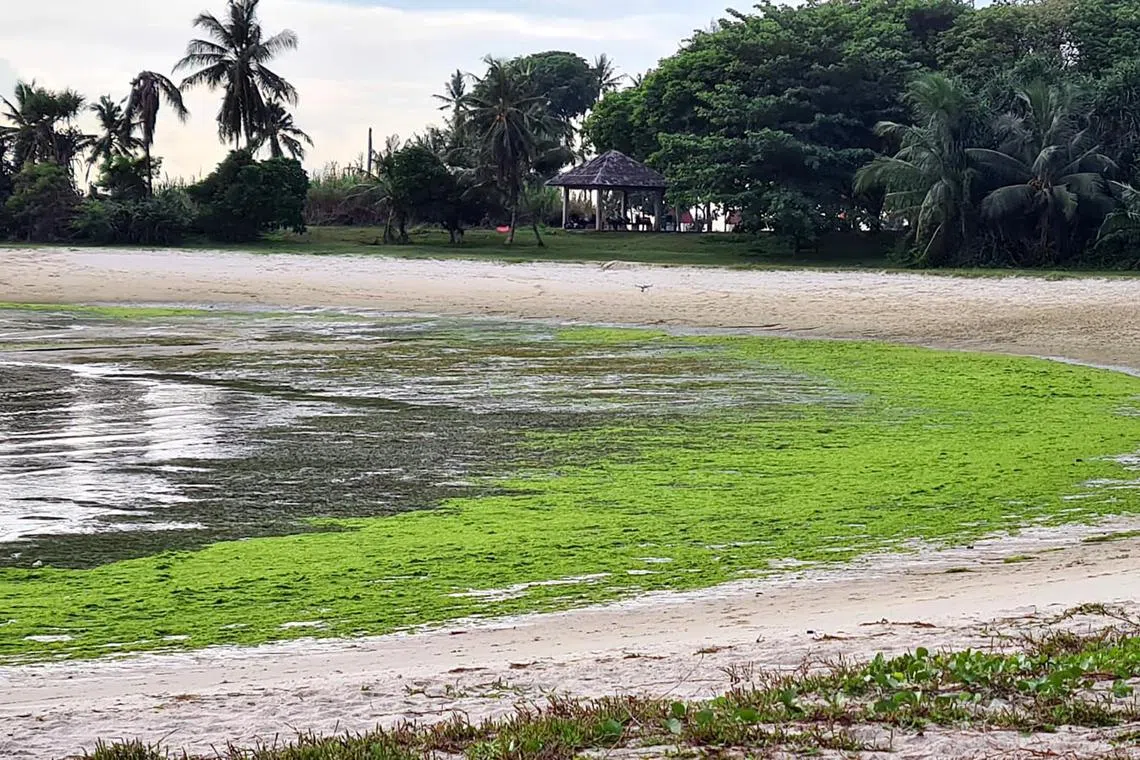
Sea lettuce blooming on a beach on Lazarus Island in June 2022.
PHOTO: PAVARNE SHANTTI
Scientists were surprised by the large sea lettuce patches observed in April and June 2022, as such blooms tend to be more common on the northern coastline of Singapore and during the north-east monsoon, which occurs between December and March, said Dr Sarira, who was then a research fellow at the National University of Singapore (NUS) Centre for Nature-based Climate Solutions.
While the exact cause for the sea lettuce bloom was unclear, the researchers said it could have been inadvertently caused by the popularity of Lazarus Island as a quick getaway when international borders closed during the Covid-19 pandemic.
Algal blooms occur as a result of high levels of nitrate in seawater, which could have been caused by an increased number of visitors to the island and fish farms in the area.
“Without scrupulous management and monitoring, the coastal waters of the St John’s Island Complex are vulnerable to further eutrophication – an overabundance of nutrients that contributes to explosive algae growth – and macroalgae blooms,” the researchers said. Lazarus Island is one of the four islands that make up the St John’s Island Complex.
Following the bloom, the sea lettuce was still present in June 2023 but was not growing in large amounts, said former NUS Tropical Marine Science Institute research assistant Pavarne.
Singapore’s sea slug sleuths
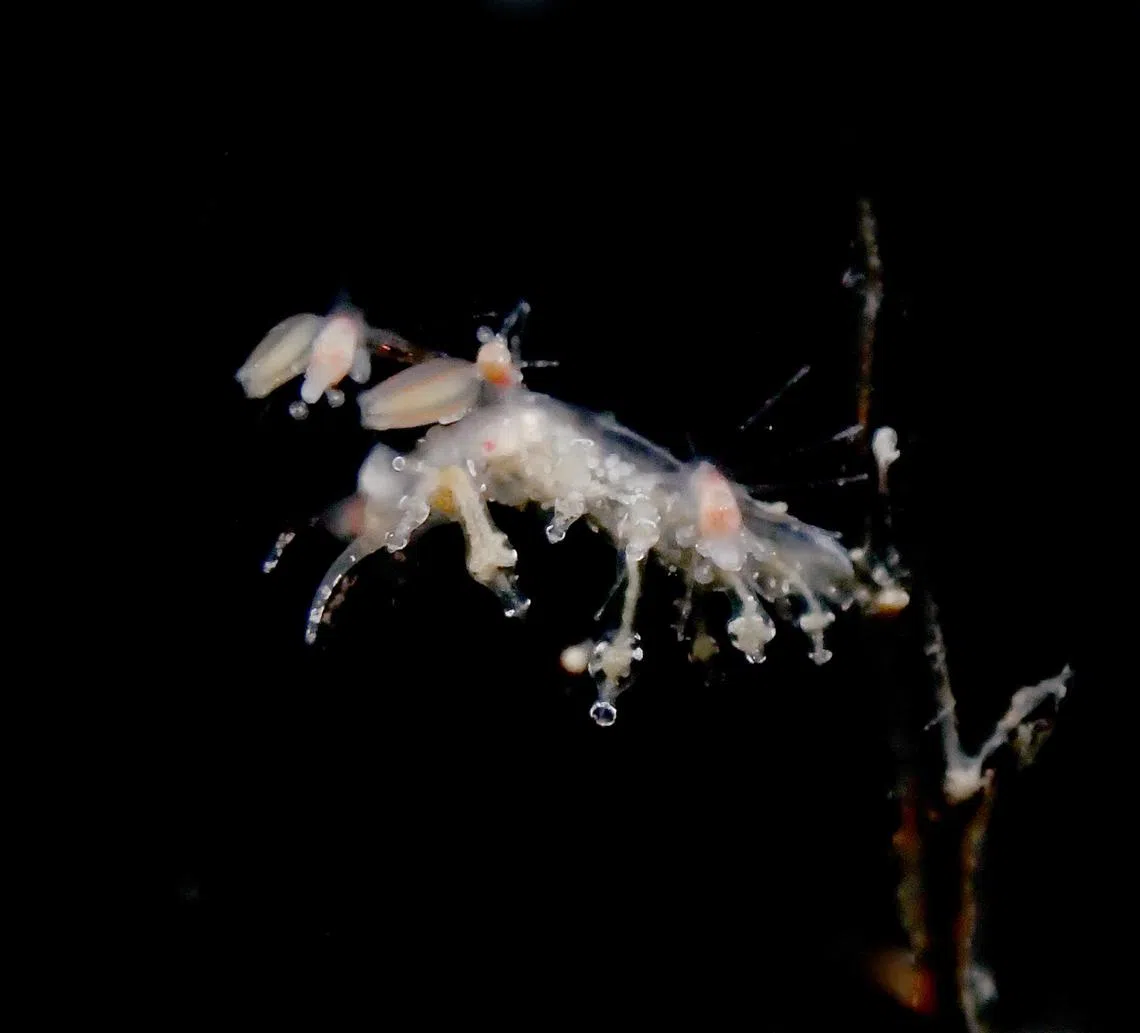
A Myja longicornis nudibranch – a species of sea slug – sighted in the waters off Pulau Hantu.
PHOTO: TOH CHAY HOON
While marine enthusiast Toh Chay Hoon was scanning the inky darkness of the waters off Pulau Hantu during a night dive, a translucent sea slug tinier than a pea caught her eye.
Later, the 46-year-old NUS senior executive checked her photographs of the nudibranch with coral-coloured markings and spindle-like protrusions, and was thrilled to find out that it had never been seen before in Singapore.
Her record of the Myja longicornis nudibranch feasting on hydroids – stinging animals related to jellyfish – was published in February 2023.
“The nocturnal nudibranch may have been in our waters all this while but could have been overlooked because of its small size of about 3mm and the fact that there are not many night dives,” said Ms Toh.
She is among a growing community of sea slug spotters who are steadily expanding the records of nudibranchs in Singapore as a result of their soft spot for capturing the creatures’ jewel-like colours and bold patterns.
Ms Toh has contributed to about 20 new records of sea slug species here, 15 of which are nudibranchs, since 2013.
She also documents her sightings of more than 150 different types of sea slugs in Singapore on her Instagram account seaslugsofsg, and gives advice to fellow enthusiasts and recreational divers looking to photograph these creatures.
Among those who have turned to Ms Toh for advice is Ms Wong Minn Xuan, a senior computer scientist who in May logged the first observation of the nudibranch Trapania miltabrancha in Singapore.
“I hope it shows that there is still more to explore in our local waters,” said Ms Wong, 29.
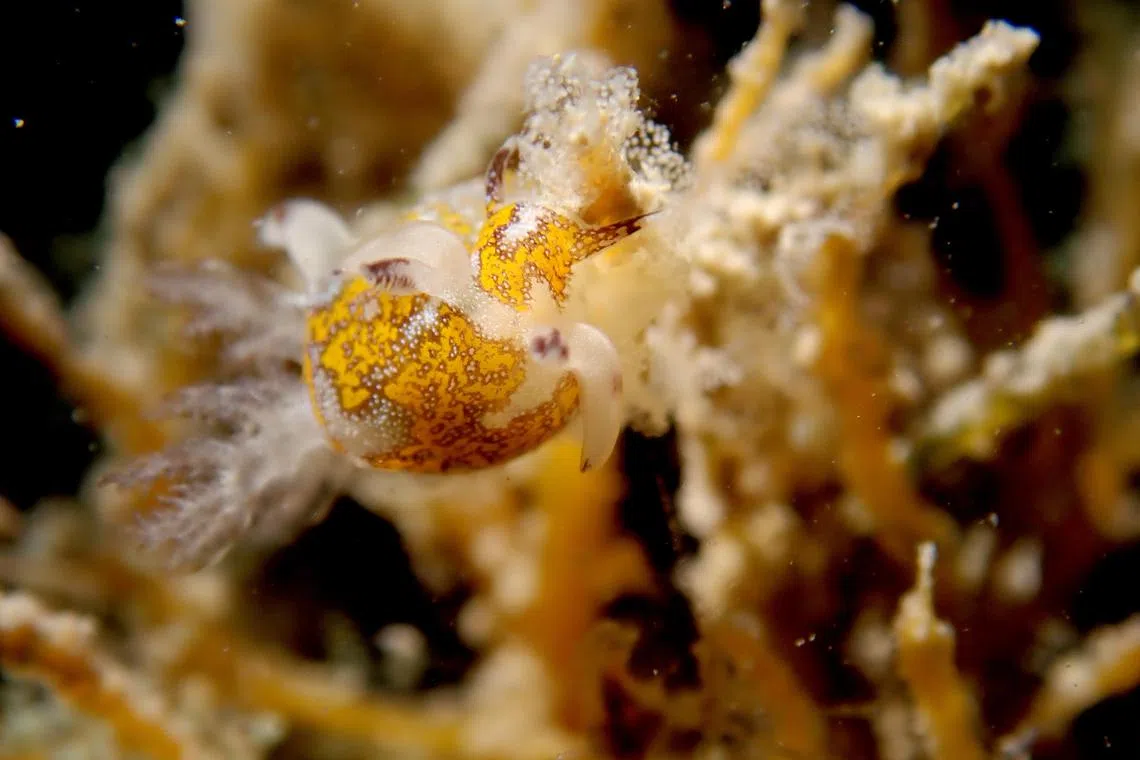
A Trapania miltabrancha nudibranch – a species of sea slug – sighted in the waters off Pulau Hantu on April 8.
PHOTO: WONG MINN XUAN
Lost walnut tree
For more than a century, Singapore’s only native walnut tree was thought to have been lost for good.
This changed when veteran National Parks Board (NParks) staff Ali Ibrahim spotted a fruit with a three-lobed wing – slightly bigger than a fingernail – in leaf litter in August 2022.
The fruit was traced to an Engelhardia serrata tree, estimated to be 33m tall, towering above the forest floor of the Central Catchment Nature Reserve.
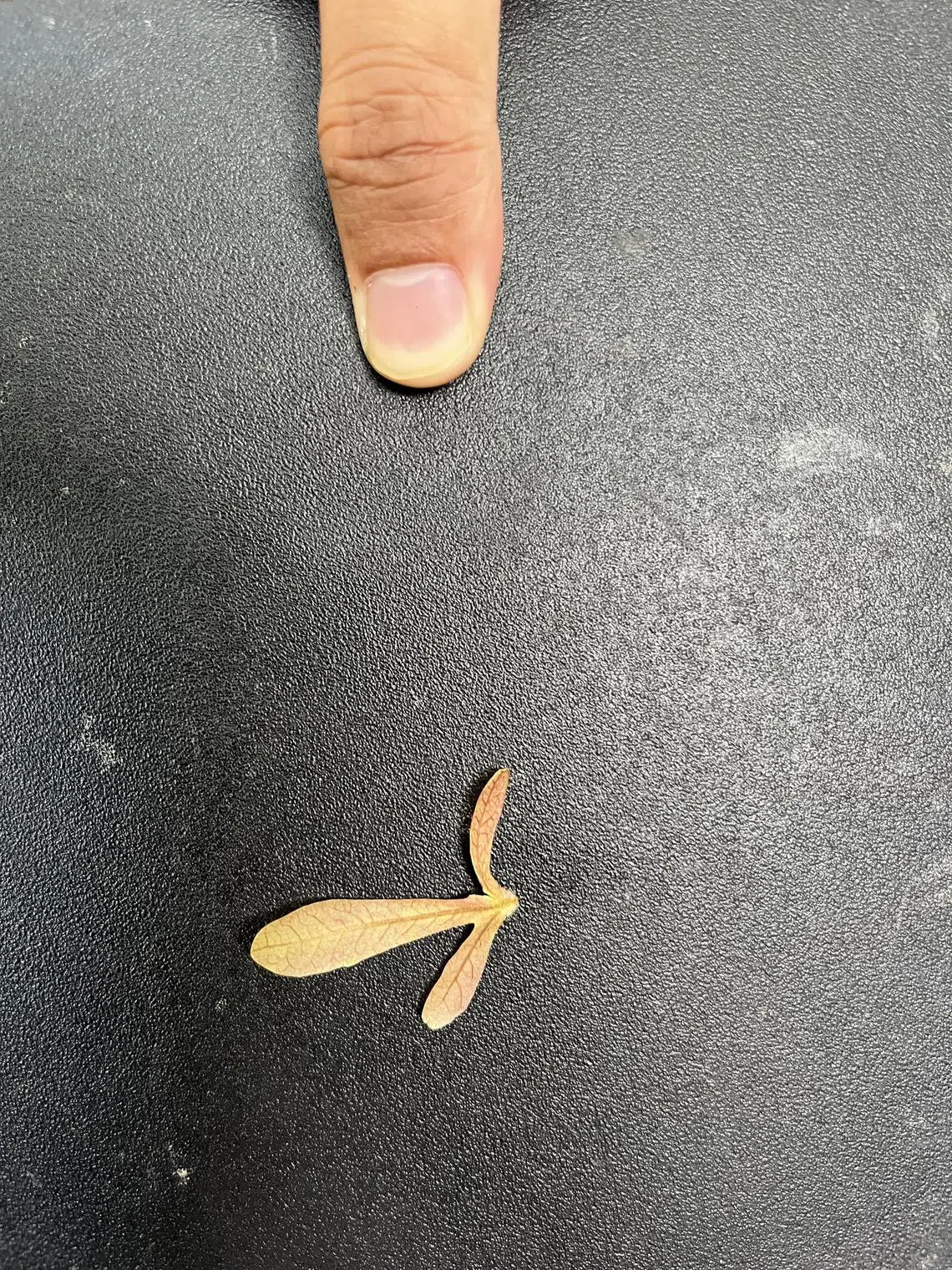
A fruit from the Engelhardia serrata – Singapore’s only native walnut tree – with a three-lobed wing was spotted in leaf litter by National Parks Board staff Ali Ibrahim while conducting a survey on Aug 17, 2022. The tree was thought to be extinct locally.
PHOTO: ALI IBRAHIM
Dr Chong Kwek Yan, who co-authored the record documenting this finding, said: “Prior to the discovery, Engelhardia serrata was presumed extinct in Singapore as the last known observation here was made 128 years ago in 1894.”
It was rediscovered during a survey as part of NParks’ forest monitoring efforts.
The monitoring project included 60 plots set up in 1992 by Singapore’s first commissioner of parks and recreation Wong Yew Kwan to understand the forest vegetation and structure in the Central Catchment Nature Reserve, said Dr Chong, a senior researcher at the Singapore Botanic Gardens.
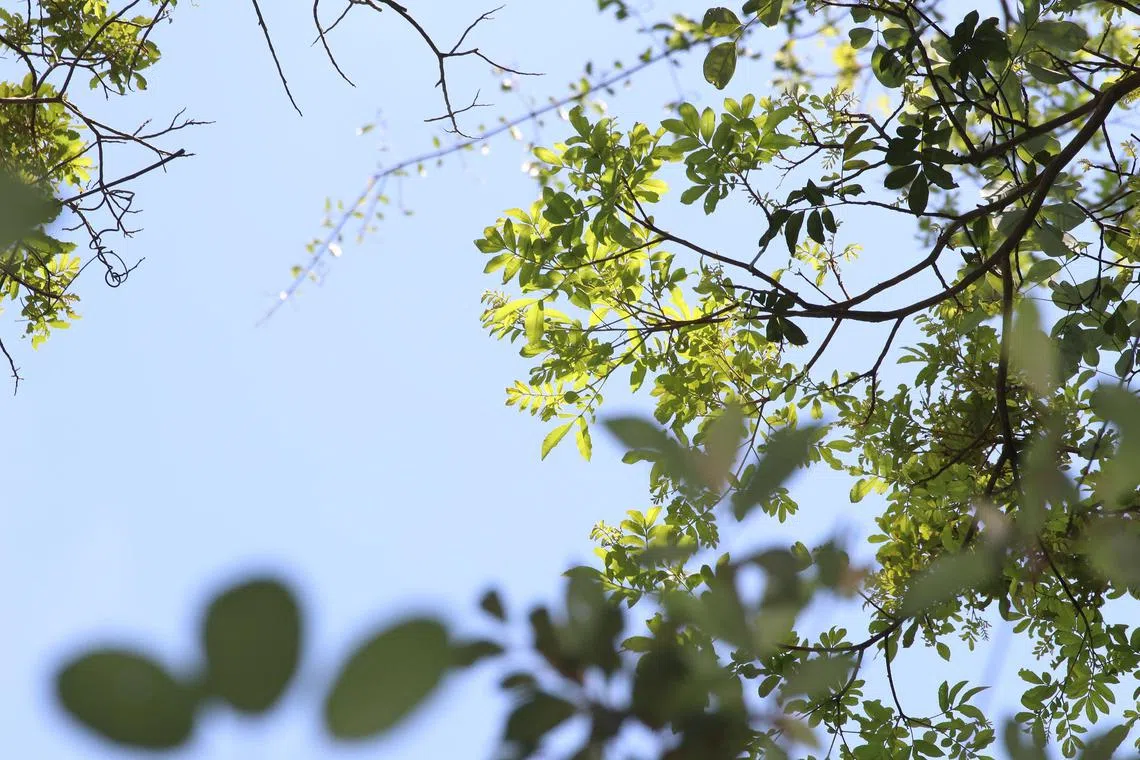
The Engelhardia serrata – Singapore’s only native walnut tree – in the Central Catchment Nature Reserve.
PHOTO: MUHAMMAD KHAIRULDIN AZIZ
Back then, that area was not as well studied as the Bukit Timah Nature Reserve.
Though the survey nearly 30 years ago yielded several records of new tree species for Singapore, the walnut tree most likely went under the radar as it grew just outside the survey’s boundaries, Dr Chong said.
The tree can be found in other parts of South-east Asia, including Thailand and Myanmar.
Civet v loris
Primatologist Andie Ang was reviewing 190 nights’ worth of footage from a camera trap hidden 14m up a tree when she noticed a distinctive pair of glowing eyes.
Her delight at seeing a rare small-toothed palm civet turned to shock when she noticed a locally endangered slow loris hanging from its mouth.
Dr Ang said: “It’s a locally critically endangered species eating an endangered species.”
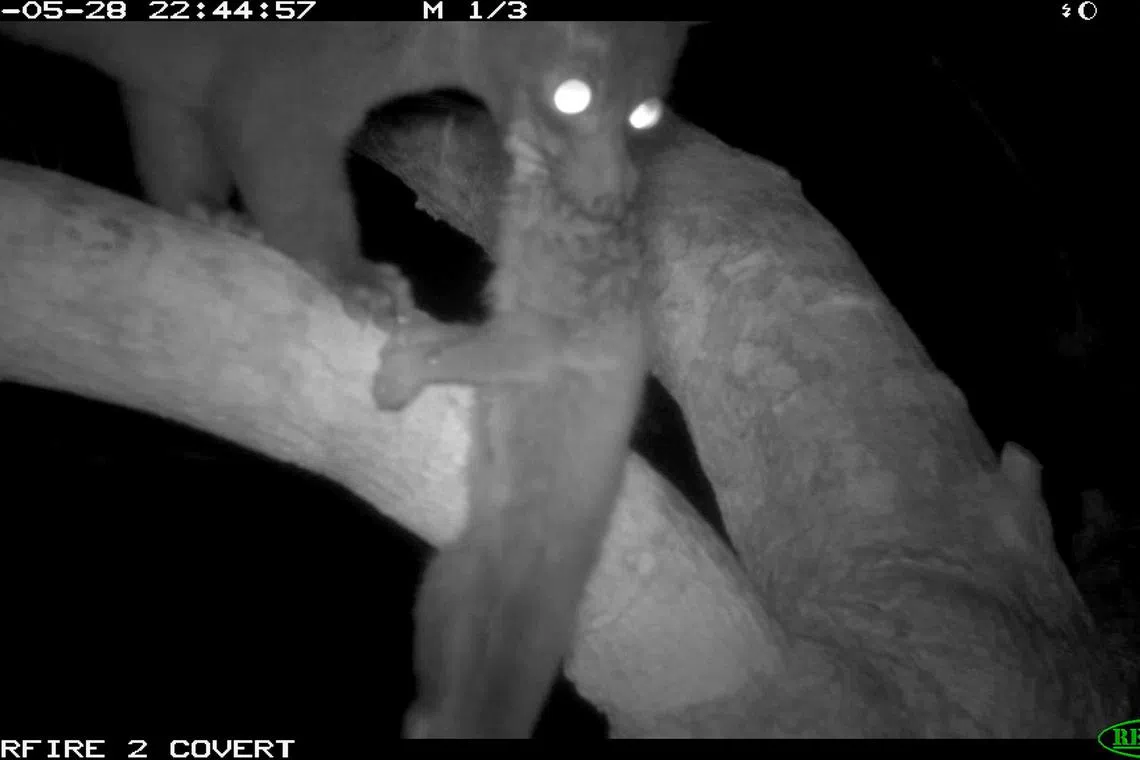
A small-toothed palm civet carrying a Sunda slow loris in its mouth in the Central Catchment Nature Reserve in May 2022.
PHOTO: ANDIE ANG
The encounter was published by Dr Ang and her co-author Sabrina Jabbar in March 2023. Such an encounter between the two species had never been documented before.
Toxins from the slow loris – the world’s only venomous primate – appeared to stun the civet momentarily before the larger animal continued eating its dinner.
A record of these animals attacking each other in the wild is “virtually unobtainable” as both the predator and prey are tree-dwelling, solitary creatures that are nocturnal, making them harder to spot in person, the researchers wrote.
The observation sheds light on the diet of the small-toothed palm civet, which is known to inhabit only the Bukit Timah and Central Catchment nature reserves.
Dr Ang said: “We still don’t know much about our nocturnal wild animals like the small-toothed palm civet and Sunda slow loris.
“Putting camera traps in trees in our nature reserves can help us to better understand their distribution and behaviour to develop measures that can effectively conserve them.”


